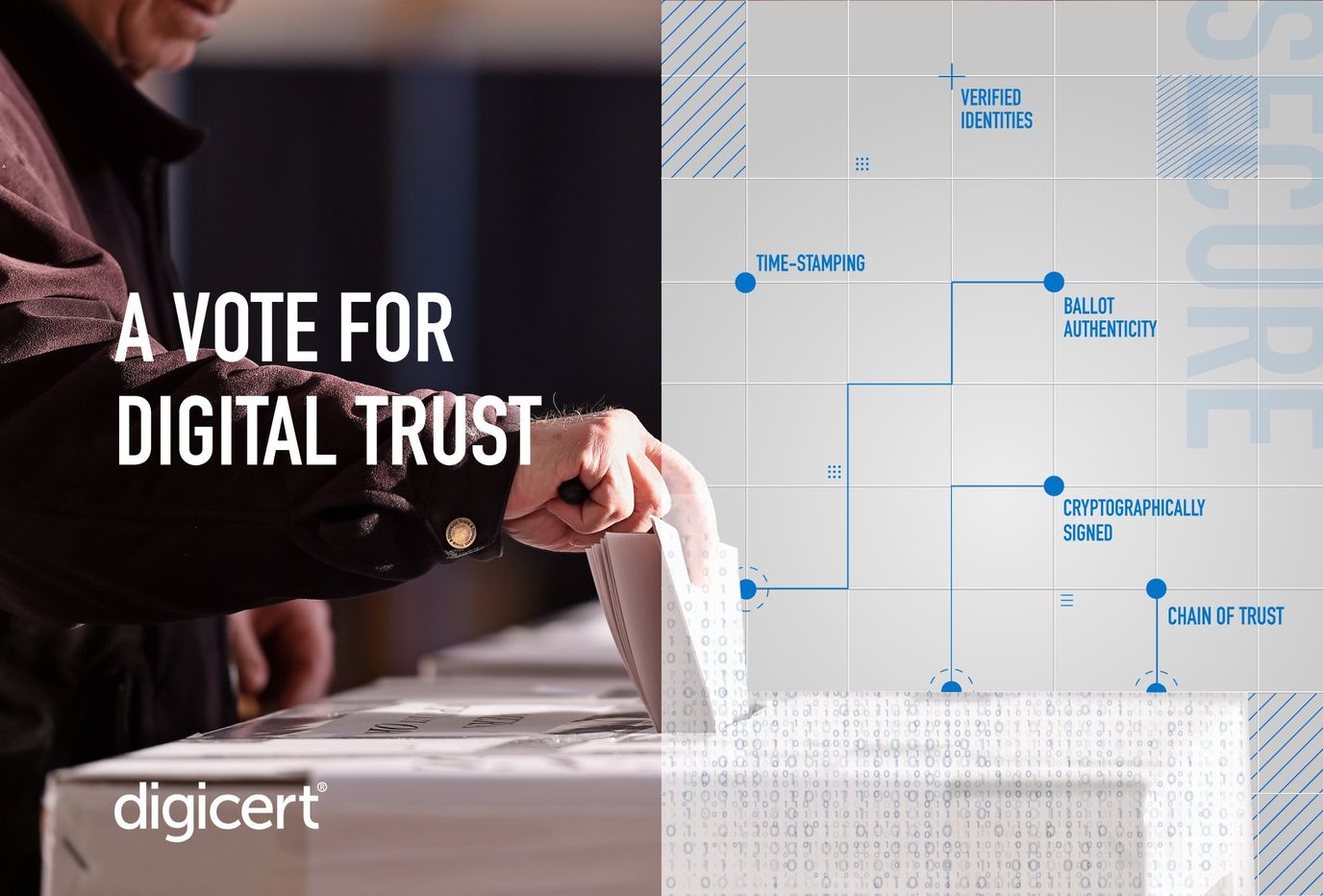
Trust in national election results is the backbone of a democratic society. At the heart of that trust is citizen confidence in the integrity of the election processes, including authenticity of the ballots, voter identification, ballot counting and certification of the outcome. To build this trust, citizens need to know that the data and processes on which an election outcome is based have not been intercepted, altered or hacked.
In some cases, citizens may be concerned about election interference, such as when phony ballot boxes were deployed in several California counties in 2020. In other cases, citizens experienced the consequences of flawed ballot design, which occurred during the 2000 U.S. national election and forced seemingly subjective analysis of partially perforated ballots by election officials to determine intent of the voter. It was during that national election that the world became familiar with the term “hanging chad” and the concept of what degree of ballot perforation signaled voter intent.
Securing election processes with digital trust is one mechanism for providing transparency and building citizen confidence in election results. It is a meaningful place where digital trust intersects with real world outcomes.
Digital trust has its roots in public key infrastructure (PKI), and is based on a set of technologies and processes that govern the issuance and use of digital certificates to verify identity, encrypt communication and ensure integrity of data being received (see Building Blocks of Digital Trust). A widely recognized use of digital certificates is securing websites. Websites display a padlock in the navigation toolbar to signal that they are secured by a digital certificate: the website identity has been verified, that communications with a website visitor are encrypted and information being viewed has not been altered. This combination of identity, encryption and data integrity provides web visitors with digital trust: the confidence that they can move freely around the internet.
Let’s now take a look at how the confidence that results from digital trust can be built into election processes:
Signaling ballot authenticity
The ballot is the key instrument for recording a voter’s preferences. For the most part, paper processes work. However, mailed ballots can be intercepted, replaced, misplaced, lost in the mail. A digital ballot can be signed with a government eSeal that, like the website padlock, signals to the voter that the digital document is authentically from the government (or issuing body), and that it has not been altered while in transit.
Secured voter and poll worker identity
Secured identity is the next step in establishing a chain of trust. Poll workers and/or voters can establish a unique digital identity backed by a digital certificate. Secured digital identities are similar to passports, in electronic form. They document that an individual has demonstrated credentials that have been verified through preset steps. Digital identities can be used for a number of purposes, including authentication to applications, to corporate networks, to government services, and for signing documents.
Digitally signed ballots and/or ballot counts
Digital signatures, in turn, cryptographically bind a digital identity to a document. For a voter who is digitally signing a ballot, digital signatures attest to signer identity and to signature authorization. They further verify that the document has not been altered since signature and record the timestamp of signature. In many ways, digital signatures have the potential to remove attack surfaces (and human error) that can be present in paper processes: identities cannot be manipulated, ballots cannot be intercepted, attempts to alter the document are traceable. And with digital signatures, there is no ambiguity of intent that is present with the hanging chad.
Digital signatures, in this way, can establish a chain of trust: they indicate that the ballot signed was an an authorized ballot, that the voter is the signer, that the voter is authorizing their vote, that they voted within the voting window and that their vote has not been altered. Similarly, poll workers can digitally sign ballot counts, cryptographically binding their identity to the count results. In this way, a chain of trust can be established for poll reporting.
From paper to digital: it’s about more than productivity
Digital transformation often speaks to productivity gains made from moving from face-to-face, paper-based processes to digital processes. However, digital trust initiatives can deliver more than just productivity. They can increase the overall level of trust in processes by removing the possibility for breaks in security. With accurate ballots, cryptographically bound to citizens with verified identities, we can be sure that the right person signed an authorized ballot, that they have authorized their signature and that the counts associated with the votes have in turn been appropriately validated. This creates an indisputable election outcome.
This is where digital trust meets the real world.
Securing elections with DigiCert
Many countries are still early in their journey for delivering national digital identity programs, essential to elections in which each voter digitally signs their official ballot. In the meantime, DigiCert has supported security in elections with digital trust solutions that establish poll worker digital identity and enable verified poll workers to upload and digitally sign poll counts. With these solutions, governments are increasing the security and accuracy of their election reporting, and eliminating the attack surfaces, human error, or paper error that can occur with paper-oriented systems.
Want to learn more? Email sales@digicert.com.





